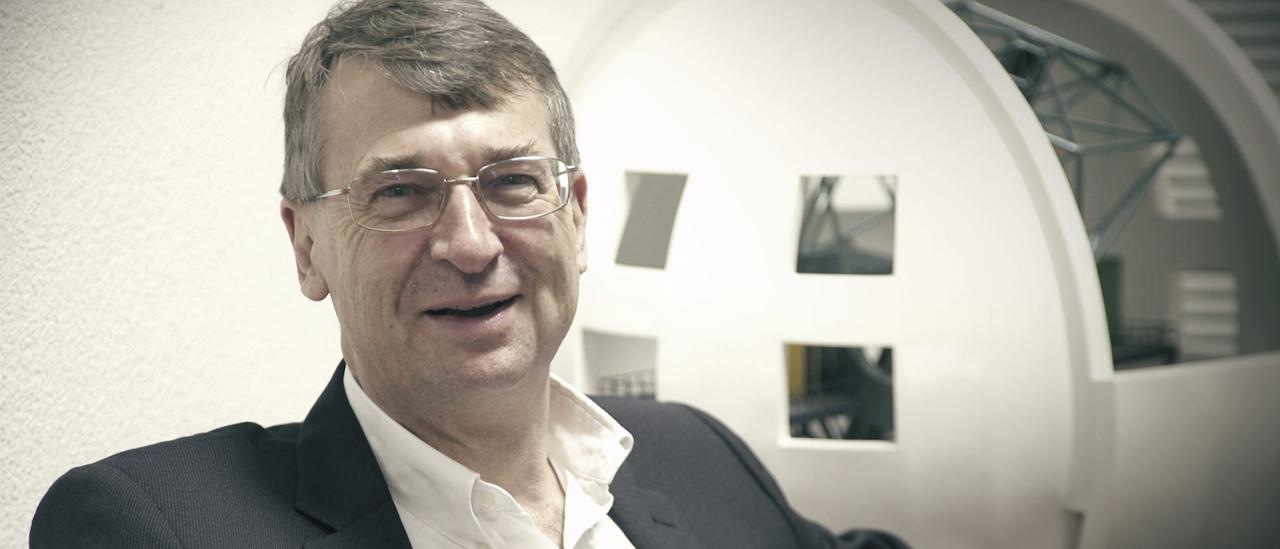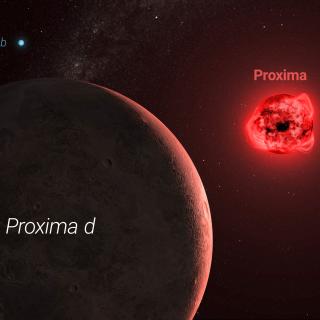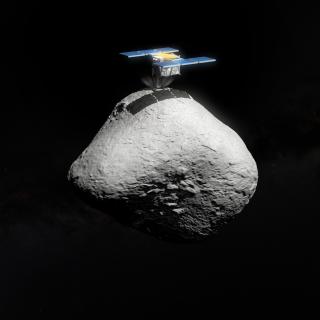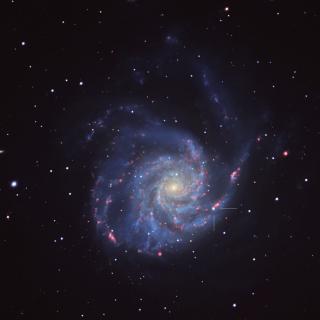He was one of the “Seven Samurai” who in 1986 published that the Milky Way, together with its neighbour galaxies, in clusters and superclusters, forms a huge concentration of matter which they named the “Great Attractor”. Today, Professor Roger Davies is the President of the European Astronomical Society (EAS), whose Board of Directors recently met at the Instituto de Astrofísica de Canarias (IAC). Davies, who is Professor at the University of Oxford, worked for many years with the William Herschel and Isaac Newton telescopes, at the Roque de los Muchachos Observatory. Because of this, he is in favour, with no doubts, about the need for a “supertelescope” in the Northern Hemisphere, and of the suitability of La Palma to host the Thirty Metre Telescope (TMT) if in the end it cannot be installed on Mauna Kea. He considers that there would be a “potential for European participation” which it would not have in Hawaii, and he sees no reason not to tackle all of the science planned for this telescope, including that at longer wavelength, if it works in queue in mode, as does the Gran Telescopio Canarias.
1. You are at the Instituto de Astrofísica de Canarias (IAC) for a meeting of the Council of the European Astronomical Society (EAS). Why has the EAS chosen the IAC to hold this meeting?
The IAC is a major laboratory for European astronomy and the EAS likes to move around Europe so that all parts of Europe feel part of our activity. Of course, it is very important to come to the IAC in order to learn about what is happening here and so that you can learn more about us.
2. What would you say are the major challenges facing European Astronomy?
We have a number of challenges and I think that perhaps the main one is to retain our international competitiveness. We are actually really very competitive at the moment with North America, perhaps ahead of North America in many aspects of astronomy and astrophysics, but of course when you are the top dog everybody wants to replace you, and so we have to be very careful in choosing our priorities. We have a limited budget like everybody and want it to make unique and forefront contributions. I think that our whole peer review system of space and ground astronomy is tremendously important for choosing the right projects for implementation. We have a wonderful portfolio of opportunities in front of us. So I think that it is very difficult for us to go wrong, but you should make the right choices and that is a tough challenge.
3. Has this been one of the key topics of the discussion of the meeting here?
Not so much at this meeting, because this is a meeting where we bring together all the societies affiliated to the European Astronomical Society. The objective is to hear from them what is going on in their own countries and inform them of what the Society is doing. Although the Society does have a lot of big programmes that it is pursuing, we do not have a specific role in the funding decisions of the major agencies in Europe. Our responsibility is to promote the discipline rather than any particular programme.
4. You were working for many years with the William Herschel Telescope (WHT) at the Roque de los Muchachos Observatory. Could you tell us about your experiences with it?
That was a very exciting time. During the nineteen nineties and two thousands, I did several things at the William Herschel Telescope, and also at the Isaac Newton and Jacobus Kapteyn Telescopes. An exciting one was to bring a new instrument to the WHT that nobody else had for a new technique of integral field spectroscopy with the SAURON. This was then used to carry out a couple of pretty big surveys which would definitely not have been possible elsewhere. There is nothing more exciting for an observational astronomer than to be at a telescope with an instrument that can do things that no other telescope can do, and to be the first person to see the data that comes in. It was very exciting time. The William Herschel Telescope was a perfect telescope on which to do this work and, in fact, the site of the Roque is an excellent site, so we were able to get terrific data.
5. Would you like to comment on some unique results?
I think that everybody would agree that SAURON was a ground-breaking instrument; we were able to characterize the dynamics and populations of early type galaxies in a way that had not been done before. And this enabled us to think about things like black holes in the centre of these galaxies, the dark matter in the galaxies, how old the stars in the galaxies are, what these galaxies are made of. In addition, we were able to do this in a way that had never been done before because we were able to explore essentially the whole galaxy rather than just a small region.
6. Thinking about the results of the combination of the WHT with the sky in ORM, is it true what we claim that the sky of La Palma is in fact one of the best in the world?
No doubt. No doubt. It is an excellent site.
7. You were a participant in the production of the Gemini 8m telescopes in Hawaii and Chile. Thinking about the future now, to what extent do you think European Astronomy will benefit from the TMT’s installation at the ORM in La Palma?
The first thing to say about these giant next generation telescopes –TMT of 30 metres and 38m of ESO in Chile- is that we really must have one of these telescopes in the Northern Hemisphere. It is absolutely logical. I think it is pretty clear that the European Southern Observatory telescope on Armazones is going ahead and construction is under way.
The situation in northern hemisphere is much less definitive, and the problems that the TMT has had in Hawaii are beginning to be quite worrying. So, my first comment would be that we must have such a facility in the North, because of course there is a unique sky and, if indeed it is not possible to do it in Hawaii, it would be wonderful to have it here in La Palma, at the Roque, and of course there would be the potential for European participation here in a way that isn’t possible in Hawaii.
8. Do you think queue observing on the TMT at the ORM would be able to deliver the full science case?
That is a tricky question. The main science case of the 30 meter class telescopes is in the 1-5 micron region, and there is no doubt that in the shorter wavelengths the Roque that it is a very competitive site. And, if you use as you say queue observing and pick the best conditions for the longer wavelengths, there is every chance that the science case can be addressed by the telescope in La Palma. I don't see that as a fundamental problem.
9. You were one of the "Seven Samurai" who announced in 1986 that the Milky Way, with neighbouring galaxies, clusters of galaxies, and superclusters are moving within the universe towards a huge concentration of matter. How did this publication affect your career, and what do we know today about this "Great Attractor" and, in general, about the large scale evolution of the galaxies?
This was one of those moments where there is a result that nobody expects. Reflecting back, perhaps we should have expected it, but it was a surprise to find that the local volume of our universe was moving with such a large velocity in the direction of Hydra and Centaurus regions in the sky.
First of all, it was enormously beneficial for instance to have this name the "Seven Samurai" this really did capture people's imagination and it brought attention to the result. Of course the reason for the name is that it was a result that overturned the view at the time of cosmology. And the reason for that is that the velocity was so high over a volume that was so big that was not expected in the version of cosmology that was current at the time. And so this was a really good result. There are large scale motions we know a lot more about them now like all motions we use them to determine the distribution of mass in the universe. It was one of the first times that we began to realize that there are huge volumes of the universe where there is a mass enhancement compared to the average. This is now an idea which is commonly accepted, but it was not at the time.
I guess it must also have had an effect on my career. At the time I was working in the United States and it was a factor in my getting a position back in Europe. The very fact that you asked me this question indicates that you know it does still have a currency, and I have been very fortunate in my career. I’ve had lots of wonderful opportunities and some of them were because my profile as a scientist was raised by this result.



